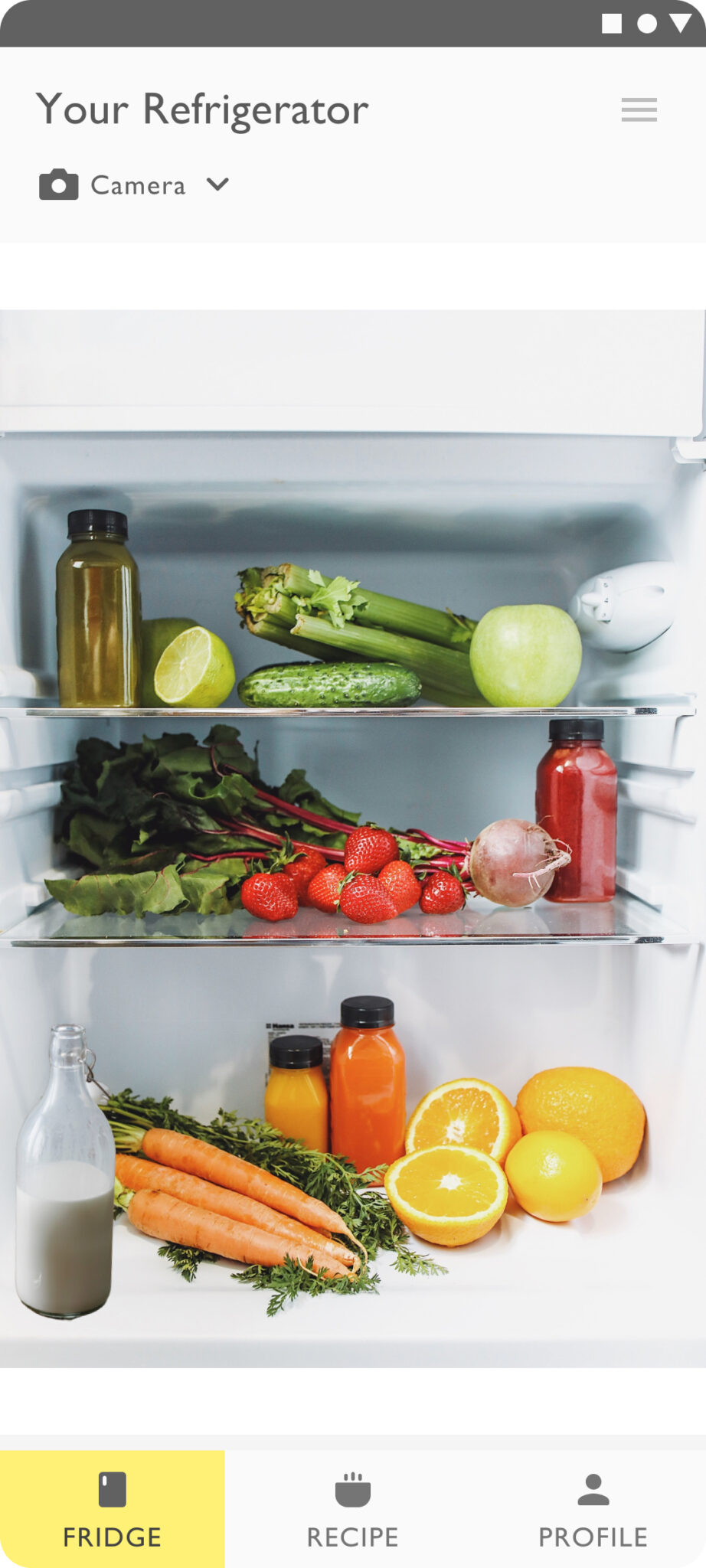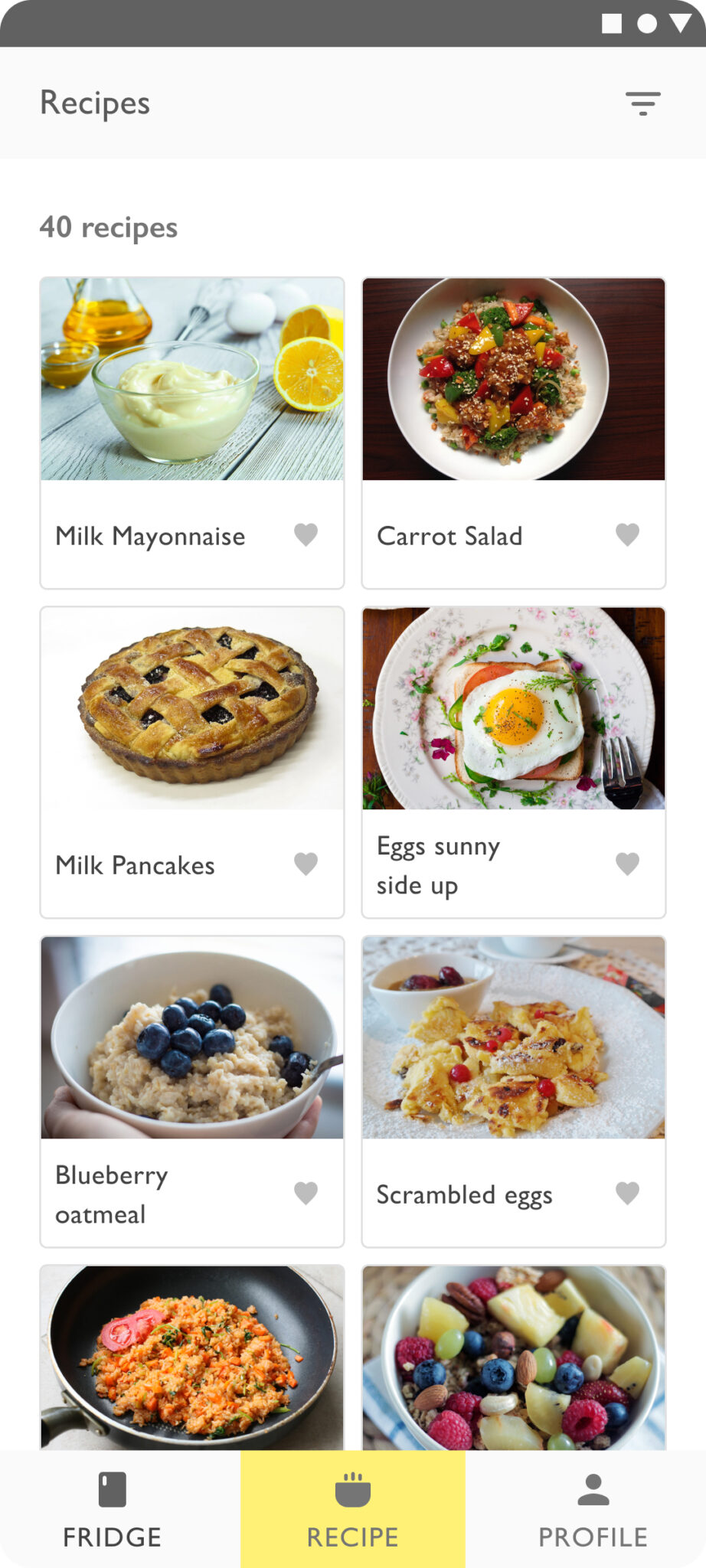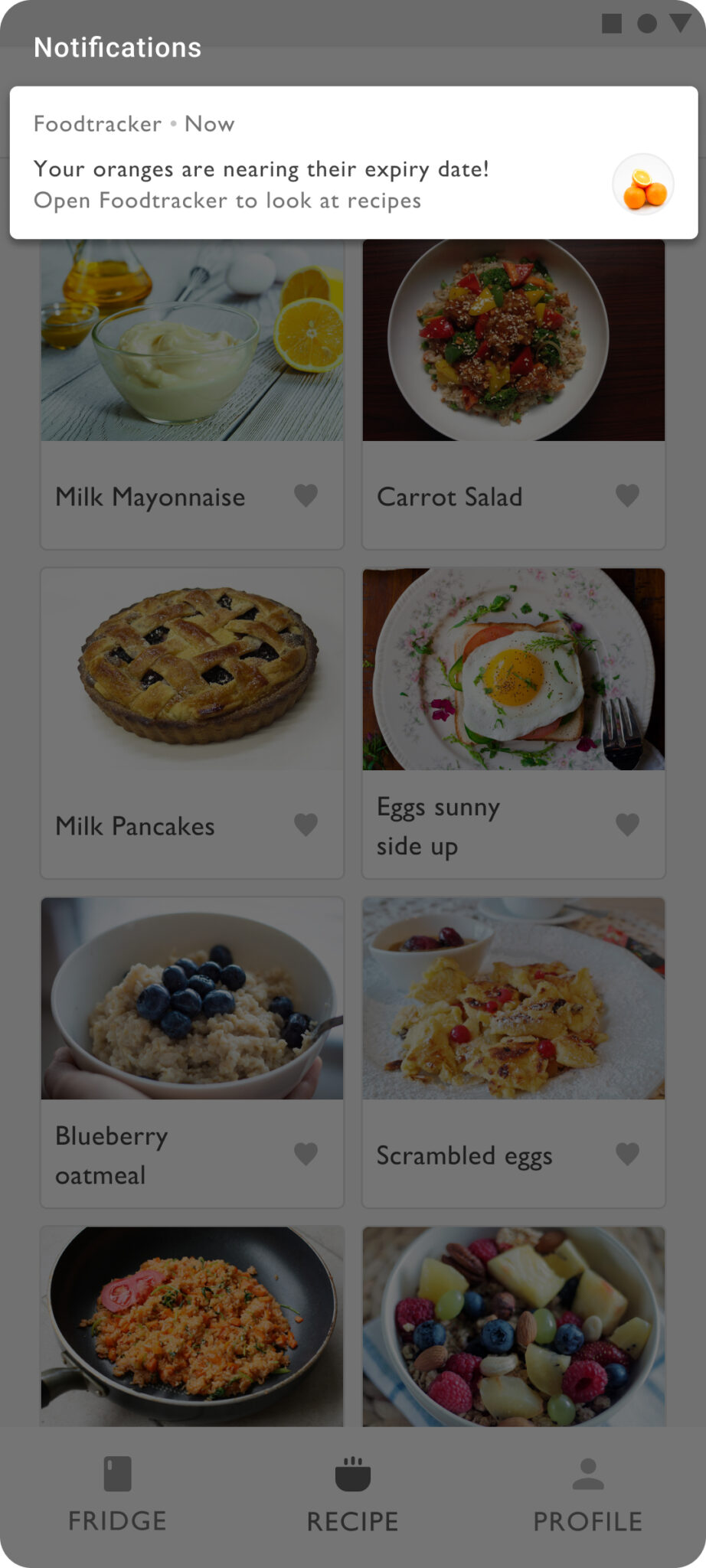
Onboard wireless camera provides real time information about the food in your refrigerator

Foodtracker recommends recipes for food that is in your refrigerator and close to expiry. Never waste good food again.

Know what food is nearing expiry via in app notifications